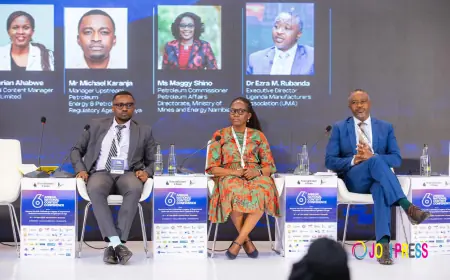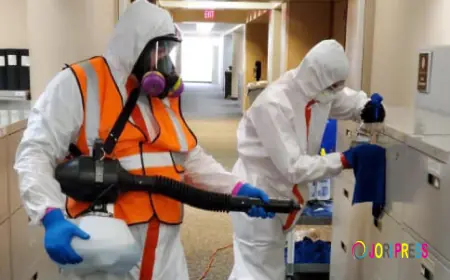Why 3D Printer Metal Powder Is Shaping the Aerospace and Automotive Industries
Discover how 3D printer metal powder is reshaping aerospace and automotive industries with lightweight, high-strength, and thermally efficient designs.

The relentless pursuit of efficiency, performance, and weight reduction in the aerospace and automobile sectors has converged upon a singular transformative technology: Additive Manufacturing (AM). At the core of this industrial revolution lies , a material engineered not just for fabrication, but for accomplishing performance envelopes previously deemed impossible by traditional production techniques.
The shift is essential: traditional production (casting, forging, machining) is inherently a subtractive manner, often wasting as much as ninety percent of costly raw material. Additive Manufacturing, utilising finely-tuned 3D printer metal powder, reverses this paradigm. By building components layer-by-layer primarily based on a virtual model, AM gives unparalleled material efficiency and design freedom, eliminating the limitations of traditional tooling.
This functionality is the muse for creating components with complicated internal geometries - which include lattice systems or conformal cooling channels - that maximize strength-to-weight ratios and thermal control competencies, both non-negotiable necessities for excessive-overall performance applications.
Aerospace: The Quest for Ultimate Lightweighting and Thermal Resilience
The aerospace and defense region has historically been the main motive force of metallic AM adoption, largely because of the critical nature of lightweighting. Every kilogram saved in an aircraft or rocket at once translates to whole operational cost savings and expanded payload capacity.
Key Applications and Impact
-
Topology Optimization: 3D printer metal powder allows engineers to apply a generative design software program to create components in which material is only located, which is structurally essential. These effects are seen in components that are often 40-60% lighter than their traditionally manufactured counterparts, while preserving or exceeding mechanical properties.
-
Part Consolidation: Complex assemblies requiring more than one component, welds, and fasteners can be consolidated into single, monolithic printed parts. For instance, a single rocket engine injector, printed from a high-performance nickel alloy powder, replaces dozens of smaller pieces, simplifying inventory, reducing leak points, and improving reliability in challenging applications.
-
High-Temperature Alloys: The processing of refractory and superalloys (e.g., Titanium, Inconel) through steel AM is essential for components exposed to intense warm temperatures and stress, together with jet engine combustion liners and turbomachinery blades. The granular consistency and purity of the steel powder ensure microstructural integrity under the disturbing conditions.
The trend is clear: industry statistics indicate a significant year-over- boom in the number of licensed 3D-printed metal parts in commercial aircraft, underscoring the technology's maturity and reliability.
Automotive: Electrification and High-Efficiency Thermal Management
The automotive industry, specifically the electric vehicle (EV) phase, is experiencing a speedy increase in the adoption of 3D printer metal powder, moving its awareness from prototyping to production manufacturing. The mission right here is less about flight and more about power density and thermal control.
The Copper 3D Printer Advantage
The performance of an electric motor or battery pack is fundamentally limited by its ability to dissipate heat. This is why the specialised competencies of the copper 3D printer end up as a game-changer.
-
Unmatched Conductivity: Copper is the material of choice for electric and thermal management components (e.g., busbars, warmth exchangers) due to its superior conductivity. However, its high reflectivity and thermal conductivity have traditionally made it extremely tough to process through conventional laser-based AM.
-
Thermal Optimization: Advancements in specialised 3D printer metal powder formulations and laser-based techniques (like green laser generation) have triumphed over those hurdles. This permits the advent of topology-optimized copper warmth sinks or complex conformal cooling channels integrated immediately into motor housings and battery cold plates. These designs maximize surface area touch with coolant, notably boosting thermal exchange performance, which directly translates to quicker charging and extended EV range.
-
Busbar Design: For high-current battery connections (busbars), 3D printing in pure copper allows for intricate designs that lessen resistance, limit weight, and shape into compact, space-constrained battery architectures. This fast prototyping and iteration capability speeds up the development cycle for next-generation EV powertrains.
Material Innovation: The Core Value Proposition
The success of steel AM is intrinsically linked to the material technology of 3D printer metal powder. Leading producers focus on engineering the powder’s morphology, size distribution, and chemical purity. Furthermore, the improvement of proprietary metal matrix composites and novel alloys in particular designed for the AM procedure - frequently exhibiting properties advanced to their cast or forged equivalents - is the key differentiator.
The ability to manipulate material properties on the microscopic level guarantees that the final printed component meets the rigorous performance and safety standards required by both aerospace and high-performance car automotive applications.
3D printer metallic powder isn't merely a different type of raw material - it is an enabler of complexity, efficiency, and performance that is disrupting the foundational manufacturing philosophies of two of the world’s most demanding industries. As charges lower and the technology matures - driven through advancements in material science and increased efficiency within the copper 3d printer and different forte systems - additive production will transition from a niche technique to a cornerstone of modern, high-value commercial production across the globe.
What's Your Reaction?
 Like
0
Like
0
 Dislike
0
Dislike
0
 Love
0
Love
0
 Funny
0
Funny
0
 Angry
0
Angry
0
 Sad
0
Sad
0
 Wow
0
Wow
0















































